✨ How to Roll Glass Tips: 🔥 The Complete 2025 Guide for Perfect Sessions Every Time

Ever wondered why your sessions feel harsh or your rolls keep falling apart at the mouthpiece? The secret isn't just in what you're rolling—it's in how to roll glass tips properly. Whether you're new to the game or looking to level up your technique, mastering the art of rolling with glass tips can completely transform your experience. These reusable little gems aren't just eco-friendly—they're game-changers for flavor, smoothness, and overall session quality.
In this ultimate guide, we're breaking down everything you need to know about rolling with glass tips. From choosing the perfect size to advanced rolling techniques that'll make you look like a pro, we've got you covered. No fluff, no complicated jargon—just real, practical advice that actually works. Let's dive in! 🌊
🎯 Quick Answer
How to roll glass tips in 30 seconds: Place your glass filter tip at the mouth-end of your paper, create your first wrap with even tension, roll snugly without crushing, then finish with a gentle pinch-and-twist to lock everything in place. Test airflow with a quick draw and adjust if needed. That's it—simple, clean, and effective! ✨
📑 Table of Contents
- Why Glass Tips Are Worth the Switch 💎
- Choosing the Right Glass Tips for Your Style 🎨
- Essential Tools & Materials You'll Need 🧰
- Step-by-Step: How to Roll Glass Tips (Roll-In Method) 📝
- Alternative Method: Slip-On Holders 🔄
- Common Mistakes & How to Avoid Them ⚠️
- Troubleshooting Guide: Fixing Fit & Airflow Issues 🔧
- Advanced Rolling Techniques for Pro Results 🏆
- Cleaning & Maintenance: Keep Your Tips Like New 🧼
- Optimizing Flavor & Smoothness 🌿
- Upgrade to Premium Custom Glass Tips 💎
- Frequently Asked Questions ❓
Why Glass Tips Are Worth the Switch 💎
Before we jump into the how-to, let's talk about why learning to roll with glass tips is totally worth your time. If you've been rolling with cardboard crutches or going tip-free, you're missing out on some serious benefits.
The Real Benefits You'll Actually Notice 🎁
First up: reusability. One glass tip can last you literally years with proper care. No more scrambling to make filters or running out at the worst possible moment. Plus, it's way better for the environment—less waste, more sessions. 🌍
Flavor clarity is where glass really shines. Unlike paper or cardboard that can absorb moisture and add weird tastes, glass stays neutral. You get the pure, unadulterated flavor profile of your herbs without any interference. It's like upgrading from earbuds to studio headphones—you'll taste notes you never knew were there.
Then there's the comfort factor. Ever dealt with soggy paper tips that fall apart halfway through? Yeah, that's not happening with glass. The mouthpiece stays cool, clean, and firm from start to finish. Your lips stay dry, your hands stay clean, and the whole experience just feels more premium.
Structure & Consistency 🏗️
Glass tips give your rolls structural integrity that cardboard just can't match. No more collapsed ends, no more uneven draws. The rigid glass keeps everything aligned and open, ensuring smooth, consistent airflow every single time.
Health & Hygiene Perspective 🧪
Since glass is non-porous and easy to sterilize, it's the most hygienic option available. You can completely clean and sanitize it between uses—something impossible with disposable options. For people who share or are particular about cleanliness, this is huge.
Choosing the Right Glass Tips for Your Style 🎨
Not all glass tips are created equal, and knowing how to roll glass tips starts with selecting the right hardware. Let's break down what you need to know.
Understanding Glass Tip Types 🔍
Roll-In Tips vs. Slip-On Holders
Roll-in tips are what most people think of when they picture glass tips. You literally roll these into your paper as you're creating your cone. They become part of the structure from the ground up. These offer the most seamless integration and tend to give the best airflow control.
Slip-on holders are a different beast. These are designed for you to insert your finished roll into the holder. Super convenient if you're rolling multiple pieces at once or want to pre-roll without committing to a specific tip. Great for people who like options or share their pieces.
Mouthpiece Shapes & Styles 👄
You've got options here, and each affects your experience differently:
- Round/Cylindrical 🔵 — The classic feel. Comfortable for most people, neutral on airflow. Perfect if you're just starting out.
- Flat/Paddle Style 🎾 — Wider surface area means more lip contact and often a cooler feel. Some people find these more comfortable for longer sessions.
- Helix/Vortex Design 🌀 — Internal spiral channels that help catch particles and create a swirling airflow pattern. These are money for smoothness but require slightly different rolling technique.
- Tapered Tips 📐 — Wider at the mouth, narrower at the insertion point. Helps create a natural cone shape and can improve draw consistency.
Sizing Matters: Finding Your Perfect Fit 📏
Getting the size right is crucial for learning how to roll glass tips effectively. Too small and you'll have gaps and loose fits. Too large and you'll struggle to wrap the paper properly.
Standard Size Guide
- 6-7mm — Slim rolls, single-wide papers, personal-size pieces
- 8-9mm — Standard size, works with most 1¼ papers, most versatile option
- 10-11mm — King-size rolls, 1½ papers, larger party pieces
- 12mm+ — Extra large formats, cones, specialty applications
Material Quality Check ✅
Not all glass is the same. Look for borosilicate glass—this is the medical-grade stuff that handles heat and cleaning chemicals without breaking down. Cheaper soda-lime glass can crack with temperature changes and won't last as long.
What to Inspect Before Buying
- Smooth, polished edges (no chips or rough spots)
- Even thickness throughout
- Clear glass allows you to see when cleaning is needed
- Solid construction with no visible flaws or bubbles
Essential Tools & Materials You'll Need 🧰
Before we get into the actual rolling technique, let's make sure you've got everything set up for success. Having the right tools makes learning how to roll glass tips way easier.
Your Rolling Toolkit 🎒
The Basics
- Glass tips (obviously!) — Start with 2-3 in your preferred size
- Rolling papers — Thin papers like rice or hemp work best
- Grinding tool — Consistency is key for even rolling
- Rolling tray — Keeps everything contained and organized
- Poker or packing tool — For adjusting material distribution
Optional but Helpful
- Rolling machine (for beginners who need training wheels)
- Humidity pack (keeps material at optimal moisture)
- Small funnel (for cone loading)
- Tip gauge or sizer (ensures consistent diameter)
Paper Selection Matters 📄
When you're learning how to roll glass tips, paper choice can make or break your experience. Thinner papers conform better to the glass and create cleaner seals.
Best Paper Types for Glass Tips
- Rice papers — Ultra-thin, minimal taste, burns clean
- Hemp papers — Natural, good grip, medium thickness
- Unbleached papers — Chemical-free, good for flavor purists
Papers to Avoid
- Ultra-thick papers (too bulky around glass)
- Flavored papers (can interfere with glass tip flavor neutrality)
- Papers with heavy wire (makes sealing around glass difficult)
Step-by-Step: How to Roll Glass Tips (Roll-In Method) 📝
Alright, here's where the magic happens. This is the definitive guide on how to roll glass tips using the roll-in method. Take your time, practice makes perfect, and don't stress if your first few attempts aren't Instagram-worthy.
Preparation Phase 🎬
Step 1: Prep Your Materials
Grind your material to a medium-fine consistency—not powder, not chunks. Think breadcrumbs. Too fine and it'll restrict airflow; too coarse and you'll get uneven burns. Lay everything out on your rolling tray where you can reach it easily.
Step 2: Choose & Inspect Your Glass Tip
Pick your glass tip and give it a quick once-over. Make sure it's clean, chip-free, and the right size for your paper width. A dirty tip will affect flavor right away, so if it needs cleaning, do that first.
The Rolling Process 🎨
Step 3: Position the Glass Tip
Place your glass tip at one end of your paper—this will be the mouth end. Position it so about 2-3mm of the tip extends beyond the paper edge. This gives you something to hold onto and makes the initial wrap easier. Keep it straight—angled tips lead to airflow problems.
Step 4: Distribute Your Material
Add your ground material along the paper, creating a slight taper toward the glass tip end. You want less material near the tip (prevents clogging) and slightly more toward the other end. Leave about 5mm of clear space right next to the glass—this is your buffer zone.
Step 5: The Initial Tuck
This is where many people mess up when learning how to roll glass tips. Using both thumbs and index fingers, pinch the paper and material together, then start working it into a cylinder shape. The paper edge nearest you should tuck under the material and over the glass tip simultaneously.
The goal here: create tension against the glass while keeping everything aligned. Don't rush this part—it's your foundation.
Step 6: The Roll
Once you've got that first tuck secured, begin rolling away from you. Use your thumbs to guide while your index fingers maintain tension. The paper should wrap snugly around both the glass and the material.
Key technique: Roll in small increments rather than one big motion. Quarter turn, check alignment, quarter turn, check alignment. This keeps everything straight and prevents the dreaded wonky tip syndrome.
Step 7: The Seal
When you're down to the gummed edge, lick it generously (yes, generously—don't be shy). Press it down firmly, starting from the glass tip and working toward the open end. Hold pressure for 3-5 seconds to let it set properly.
Step 8: The Pinch-and-Twist Lock
Here's the secret sauce that separates pros from amateurs. Where the paper meets the glass, gently pinch the paper with your thumb and finger, then give it a tiny twist—maybe 5-10 degrees. This creates a mechanical lock that prevents the tip from slipping.
Step 9: Pack and Shape
Using your poker tool, gently pack the open end. Tap the glass tip end on your tray (lightly!) to settle everything. You're aiming for even density throughout—firm but not rock-hard.
Step 10: Final Airflow Check
This is crucial. Take a gentle draw through the glass tip. It should feel slightly resistant but not difficult. If you can't pull air through easily, you've rolled too tight. If it whistles or feels airy, you've got gaps.
Troubleshooting Your First Rolls 🔍
First few attempts not perfect? Totally normal. Here's what usually goes wrong and quick fixes:
- Tip wobbles: You didn't maintain alignment during rolling. Try again with that eye-level check.
- Paper tears near glass: Paper's too dry or you're using too much tension. Lighter touch, slightly moisten the paper.
- Gap between glass and paper: Your initial tuck wasn't tight enough. Focus on that first wrap—it sets everything up.
- Material falls out the tip end: You didn't leave enough buffer zone. Keep that 5mm clear space.
Alternative Method: Slip-On Holders 🔄
Not everyone vibes with the roll-in method, and that's cool. Slip-on holders offer a different approach to how to roll glass tips—or more accurately, how to use glass tips with pre-rolled pieces.
When Slip-On Holders Make Sense 🤔
Slip-on holders are clutch for:
- Pre-rolling multiple pieces for later
- Sharing sessions where people want different tips
- People who prefer rolling without the tip first
- Situations where you want to remove the tip mid-session
- Using with pre-made cones
How to Use Slip-On Glass Tips 📦
Step 1: Roll Your Piece Normally
Create your roll using whatever method you're comfortable with. Use a small cardboard crutch or roll without a filter entirely. Make sure the diameter at the mouth end matches your slip-on holder size.
Step 2: Shape the End
Before the piece dries completely, gently roll the mouth end on a hard surface to create a perfect circle. This ensures smooth insertion into the glass holder.
Step 3: Test Fit
Gently insert the roll into the holder. It should go in with light resistance—not too loose, not too tight. If it's too loose, you can add a thin paper strip around the roll for better grip.
Step 4: The Twist Insert
Don't just push straight in. Use a gentle twisting motion as you insert the roll. This prevents crushing the paper and creates a better seal. Think of it like screwing in a lightbulb—gentle and rotational.
Step 5: Secure the Fit
Once fully inserted, you can use the pinch-and-twist technique at the junction point if you want extra security. Some people also use a tiny dab of honey or molasses as a natural adhesive (but this requires cleaning afterward).
Common Mistakes & How to Avoid Them ⚠️
Even when you know how to roll glass tips in theory, certain mistakes trip people up repeatedly. Let's address them head-on so you can skip the frustration.
Mistake #1: Wrong Size Selection 📏
The problem: Using a 10mm tip with slim papers or a 6mm tip with king-size papers creates immediate fit issues.
The fix: Match tip diameter to paper width. When in doubt, measure your rolled diameter before buying tips. Most people default to 8mm for good reason—it's the Goldilocks size.
Mistake #2: Rolling Too Tight 😤
The problem: Crushing the paper around the glass creates airflow restriction. You'll feel like you're sucking through a coffee stirrer.
The fix: Think "snug" not "strangled." The paper should hug the glass firmly without compressing. Practice the quarter-turn technique and check airflow frequently while rolling.
Mistake #3: Poor Material Distribution 🌾
The problem: Packing material right up to the glass tip causes clogs and harsh draws.
The fix: Always leave that 5mm buffer zone. It's your particle buffer and ensures smooth airflow from start to finish.
Mistake #4: Skipping the Pinch-and-Twist 🔒
The problem: Tips that slip out mid-session, ruining the whole experience.
The fix: Never skip the pinch-and-twist lock. This tiny 2-second step makes the difference between amateur hour and pro-level rolls.
Mistake #5: Using Dirty Glass Tips 🤢
The problem: Resin buildup affects flavor, restricts airflow, and just feels gross.
The fix: Clean after every 2-3 uses minimum. It takes 5 minutes and makes a world of difference. Set a routine and stick to it.
Mistake #6: Ignoring Paper Quality 📄
The problem: Thick or low-quality papers don't conform well to glass, creating bulky, uneven seams.
The fix: Invest in quality thin papers. The few extra bucks are worth it when you're learning how to roll glass tips.
Mistake #7: Forcing Mismatched Slip-Ons 💪
The problem: Cramming a roll into a too-small holder crushes the paper and ruins airflow.
The fix: If it doesn't slide in smoothly with the twist-insert method, it's the wrong size. Don't force it—grab a different holder or adjust your roll diameter.
Troubleshooting Guide: Fixing Fit & Airflow Issues 🔧
Even masters hit snags sometimes. Here's your comprehensive troubleshooting guide for when things go sideways while learning how to roll glass tips.
Problem: Airflow Too Restricted 😮💨
Symptoms
- Hard to pull air through
- Makes your cheeks suck in
- Little to no vapor/smoke production
Diagnosis & Solutions
Cause 1: Rolled Too Tight
Solution: Gently massage the roll near the glass tip. If that doesn't help, carefully unseal part of the paper, "back-roll" to loosen tension, then re-seal. Prevention: Practice lighter tension while rolling.
Cause 2: Tip is Clogged
Solution: Remove the tip and clean it immediately with isopropyl alcohol. Use a pipe cleaner or cotton swab to clear the channel. Prevention: Leave that buffer zone and clean regularly.
Cause 3: Material Too Fine or Too Packed
Solution: Use your poker tool to create small air channels. Gently loosen the material near the tip. Prevention: Grind to medium consistency and pack with moderate pressure only.
Problem: Airflow Too Loose/Airy 💨
Symptoms
- Whistling sound when you draw
- Feels like breathing normally
- Harsh, hot hits
Diagnosis & Solutions
Cause 1: Gap Between Glass and Paper
Solution: The micro-shim trick—cut a thin strip of paper and wrap it around the glass before rolling, or add a strip around the outside at the junction point. Prevention: Focus on that initial tuck and maintain contact throughout the roll.
Cause 2: Paper Too Loose
Solution: Press-roll technique—place the mouth end on a hard surface and roll it under your palm with firm pressure. This compresses and tightens the paper seal. Prevention: Use more tension during initial rolling.
Cause 3: Wrong Size Match
Solution: If the tip is too small for your roll, wrap thin paper strips around the tip before inserting. If too large, accept it as a learning experience and choose better next time. Prevention: Measure first, roll second.
Problem: Glass Tip Wobbles or Falls Out 🔄
Symptoms
- Tip moves when touched
- Loosens during use
- Eventually falls out completely
Diagnosis & Solutions
Cause 1: Didn't Use Pinch-and-Twist
Solution: While paper is still slightly damp, carefully lift the seal, apply the pinch-and-twist, then re-seal. Prevention: Make this step automatic in your rolling routine.
Cause 2: Poor Alignment During Roll
Solution: If caught early, you can sometimes save it with a grip band (thin silicone band around the junction). Otherwise, re-roll. Prevention: Check alignment constantly while rolling.
Cause 3: Diameter Mismatch
Solution: Add thin paper shims or switch to a better-sized tip. Prevention: Test fit before fully committing to the roll.
Problem: Uneven Burn or Canoeing 🔥
Symptoms
- One side burns faster
- Creates a canoe/tunnel shape
- Wastes material
Diagnosis & Solutions
Cause 1: Uneven Material Distribution
Solution: Before sealing, check that material is evenly distributed. Use your poker to redistribute. Prevention: Take time during the packing phase to ensure consistency.
Cause 2: Moisture Imbalance
Solution: Store material with proper humidity control. If one side is wetter, dry it slightly before rolling. Prevention: Use humidity packs and store properly.
Cause 3: Glass Isn't Centered
Solution: If you catch it before sealing, adjust glass position. After sealing, you can sometimes compensate by rotating while in use. Prevention: Visual alignment checks throughout rolling.
Advanced Rolling Techniques for Pro Results 🏆
Once you've got the basics of how to roll glass tips down, it's time to level up. These advanced techniques separate casual rollers from true craftsmen.
The Tapered Roll Technique 📐
Creating a natural taper from mouthpiece to tip improves airflow and looks super professional.
How to Execute
- Distribute material with intentional gradient—less near glass, more toward the open end
- During rolling, apply slightly more tension near the glass
- The taper should be gentle, not dramatic—about 15-20% diameter difference
- This naturally creates better draw dynamics and prevents harsh hits at the end
The Double-Wrap Security Method 🔐
For slip-on holders or situations where you need bulletproof stability:
- After inserting the roll into the glass holder, take a small strip of paper (2-3mm wide)
- Wrap it around the junction point where paper meets glass
- Seal it with a tiny bit of moisture from your tongue
- This creates a mechanical gasket that prevents slipping and seals gaps
Material Density Zoning 🎯
Advanced rollers know that even packing throughout is actually not ideal:
- Near glass (first 10mm): Looser pack for smooth initial draw
- Middle section: Medium-firm for consistent burn
- Far end: Slightly firmer to prevent running
This creates optimal airflow dynamics and prevents common burning issues.
The Pre-Shape Technique 🎨
Shape your paper before adding material for better control:
- Roll the paper around your glass tip without material first
- This pre-trains the paper and shows you exactly where it wants to seal
- Unroll, add material, then re-roll following the same path
- Results in cleaner, more consistent wraps every time
Advanced Airflow Tuning ⚙️
The Poke-and-Test Method
Before sealing, create small test holes with your poker through the material. Draw through the glass tip. Too tight? Open channels more. Too loose? Pack denser. Seal when it feels perfect.
The Wet-Seal Reinforcement
After your main seal dries, run a slightly damp finger along the entire seal line. This activates any remaining gum and creates a stronger bond, especially important around the glass junction.
Multi-Tip Strategy 🎪
Pros keep multiple tip types ready:
- Standard round for everyday
- Flat for longer sessions (cooler on lips)
- Helix/vortex for maximum smoothness
- Various sizes for different formats
Match your tip to your session needs for optimized experience every time.
Cleaning & Maintenance: Keep Your Tips Like New 🧼
Knowing how to roll glass tips is only half the battle—keeping them clean is what separates occasional users from daily enthusiasts. Proper maintenance preserves flavor, maintains airflow, and extends tip life indefinitely.
The Quick Clean (After Each Session) ⚡
Takes 60 seconds, prevents major buildup:
- Let the tip cool completely (glass retains heat)
- Hold under hot running water for 20 seconds
- Blow through from both directions to clear channels
- Shake out excess water
- Air dry on a paper towel
This simple routine prevents 80% of residue issues before they start.
The Deep Clean (Weekly for Regular Use) 🧴
Method 1: Isopropyl Alcohol Soak
- Place tips in a small jar or container
- Cover completely with 70-91% isopropyl alcohol
- Let soak for 15-30 minutes (longer for heavy buildup)
- Shake the container—you'll see residue loosening
- Use cotton swabs or pipe cleaners for stubborn spots
- Rinse thoroughly with hot water (crucial—don't skip!)
- Final rinse with cold water to close any micro-pores
- Air dry completely before storing
Method 2: Boiling Water Method
For those who prefer avoiding chemicals:
- Bring a small pot of water to boil
- Reduce to simmer and drop tips in
- Simmer for 10-15 minutes
- Remove with tongs (they'll be HOT!)
- Rinse with cold water once cooled slightly
- Use a brush for any remaining residue
- Final rinse and air dry
Method 3: Salt & Alcohol Scrub
For seriously clogged tips:
- Add tips to a sealable plastic bag
- Pour in isopropyl alcohol (enough to cover tips)
- Add 2 tablespoons coarse salt (acts as abrasive)
- Seal bag and shake vigorously for 2-3 minutes
- The salt scrubs while the alcohol dissolves
- Rinse extremely thoroughly
Maintenance Schedule Blueprint 📅
Casual Users (1-3 times per week)
- Quick clean: After every use
- Deep clean: Every 2 weeks
Regular Users (4-7 times per week)
- Quick clean: After every use
- Deep clean: Every 3-4 days
Daily/Multiple Times Daily Users
- Quick clean: After every use
- Deep clean: Every 1-2 days
Storage Best Practices 📦
Proper storage prevents damage and contamination:
- Use a small padded pouch or case
- Keep away from keys, coins, or other hard objects
- Store completely dry to prevent water spots
- Consider individual compartments if carrying multiple tips
- Avoid extreme temperatures in storage
When to Replace Your Glass Tips 🔄
Even with perfect care, eventually replacement is necessary:
- Immediate replacement: Any chips, cracks, or sharp edges
- Consider replacement: Persistent cloudiness that cleaning doesn't fix, internal etching or frosting, loss of smooth finish
- Expected lifespan: With proper care, 2-5 years or even longer
Optimizing Flavor & Smoothness 🌿
One of the biggest advantages when you learn how to roll glass tips properly is the flavor enhancement. But there's more to it than just using glass—here's how to maximize taste and smoothness.
Material Preparation for Maximum Flavor 🎯
Grind Consistency
Too fine → bitter, harsh, can pull through tip
Too coarse → uneven burn, muted flavor
Sweet spot → medium consistency, like dried oregano
The right grind allows optimal airflow past your glass tip, ensuring you taste every note.
Moisture Content
Bone dry = harsh and hot
Too moist = hard to roll, poor burn
Perfect = slight give when squeezed, not crumbly or sticky
Use humidity packs (62% RH is ideal) to maintain that sweet spot. Glass tips show off proper moisture perfectly since they don't absorb anything.
Rolling Techniques That Enhance Flavor 👨🍳
The Gentle Pack Method
Over-packing restricts airflow and causes hot, harsh draws. Pack just firm enough to prevent channeling (uneven air paths). Think "fluffy" not "dense." Your glass tip provides the structure, so the material doesn't need to be compressed.
Buffer Zone Importance
That 5mm space near the glass tip isn't just for preventing clogs—it's a flavor protection zone. This small gap lets the air cool slightly and prevents pulling particles into your mouth, keeping each draw pure and smooth.
Temperature Management for Flavor 🌡️
Why Glass Tips Help
Glass conducts heat differently than paper. It dissipates heat more evenly, preventing hot spots that create harsh, burnt flavors. The wider the glass wall, the more heat management you get.
The Pace-and-Pause Technique
Instead of continuous draws, try: Draw → Pause 3-5 seconds → Draw → Pause. This lets material cool between hits, preserving flavor compounds that break down at higher temps.
Flavor Profile Optimization by Tip Style 🎨
Round Tips
Neutral flavor delivery. What you pack is what you taste. Best for comparing different materials.
Flat/Paddle Tips
Slightly cooler draws due to increased surface area. Can make harsh materials more palatable.
Helix/Vortex Tips
The swirling action helps cool and filter. Smooths out rough edges in flavor. Excellent for maximizing lower-quality material.
The Clean Tip = Pure Flavor Equation 🧪
This can't be overstated: a dirty glass tip is the #1 flavor killer. Residue from previous sessions contaminates current flavors. If you're tasting something "off," clean your tip before troubleshooting anything else.
Signs Your Tip Needs Cleaning
- Flavor tastes stale or "burnt" despite fresh material
- Drawing feels slightly restricted
- You can see discoloration in the glass
- Flavor notes seem muted or flat
Advanced Flavor Techniques 🎓
The First-Draw Principle
Your first draw reveals true flavor. If it doesn't taste good immediately, something's wrong. Don't wait to see if "it gets better"—troubleshoot right away.
Airflow Speed Control
Slow, steady draws → maximum flavor extraction
Fast, hard draws → cooler but muted flavor
Find your pace: Experiment to discover what brings out the best in your specific setup.
The Quarter-Turn Method
Rotate your roll 90 degrees between draws. This ensures even heating and prevents over-cooking one side, which preserves flavor complexity throughout the session.
Upgrade to Premium Custom Glass Tips 💎
Now that you've mastered how to roll glass tips, it's time to experience the best hardware for the job. Our custom glass filter tips are specifically engineered for optimal rolling performance and unmatched durability.
Why Our Glass Tips Stand Out ✨
- Premium borosilicate construction — Medical-grade glass that handles heat cycles and cleaning chemicals without degrading
- Precision-machined edges — Perfectly smooth finish prevents lip irritation and ensures comfortable sessions
- Multiple size options — From slim 6mm to king-size 12mm, we've got your preferred format covered
- Vortex internal channels — Engineered spiral design catches particles while enhancing smoothness
- Custom branding available — Perfect for dispensaries, lounges, or your personal collection
- Wholesale pricing — Bulk options for businesses looking to stock premium accessories
Perfect for Every Rolling Style 🎯
Whether you're rolling traditional style, cones, or anything in between, our glass tips adapt to your technique. The precision sizing means you'll get perfect fits every single time you roll.
We manufacture our tips with quality control standards that exceed industry norms. Each piece is inspected for chips, cracks, and dimensional accuracy. When you choose our glass tips, you're choosing reliability you can count on session after session.
Ready to elevate your game? Check out our full collection of custom glass filter tips and experience the difference premium hardware makes. Available for individual orders or wholesale quantities—we've got you covered. 💪
🔥 Ready to Roll Like a Pro?
You've learned the techniques—now get the tools that make them effortless! 🎯 Stop settling for basic filters and experience what premium glass tips can do for your sessions.
- ✔️ Crafted from premium borosilicate glass
- ✔️ Precision-engineered for perfect fits every time
- ✔️ Vortex channels for maximum smoothness
- ✔️ Customize with your brand or design
- ✔️ Built to last hundreds (or thousands!) of sessions
📦 Wholesale available | 🚚 Fast shipping | 💎 Quality guaranteed
Frequently Asked Questions ❓
Wrapping It Up: Master Your Roll 🎓
Learning how to roll glass tips is one of those skills that seems tricky at first but becomes totally intuitive with practice. The key takeaways? Match your tip size to your paper, maintain even tension while rolling, don't skip the pinch-and-twist, and keep your tips clean. Master these fundamentals and you're 95% of the way there.
Remember, even pros had wonky first attempts. The difference is they kept practicing. Your 20th roll will be dramatically better than your first. Your 50th will feel effortless. And by your 100th, people will be asking you for tips (pun intended).
The flavor improvement, the reusability, the premium feel—once you experience properly rolled glass tips, there's no going back to the old ways. You're not just rolling better; you're creating a better overall experience for yourself.
So grab your glass tips, your favorite papers, and start practicing. The techniques in this guide have been battle-tested by thousands of satisfied rollers. Follow the steps, avoid the common mistakes, and don't be afraid to develop your own style once you've got the basics down.
Happy rolling, and may every session be smooth! ✌️

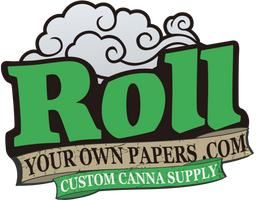
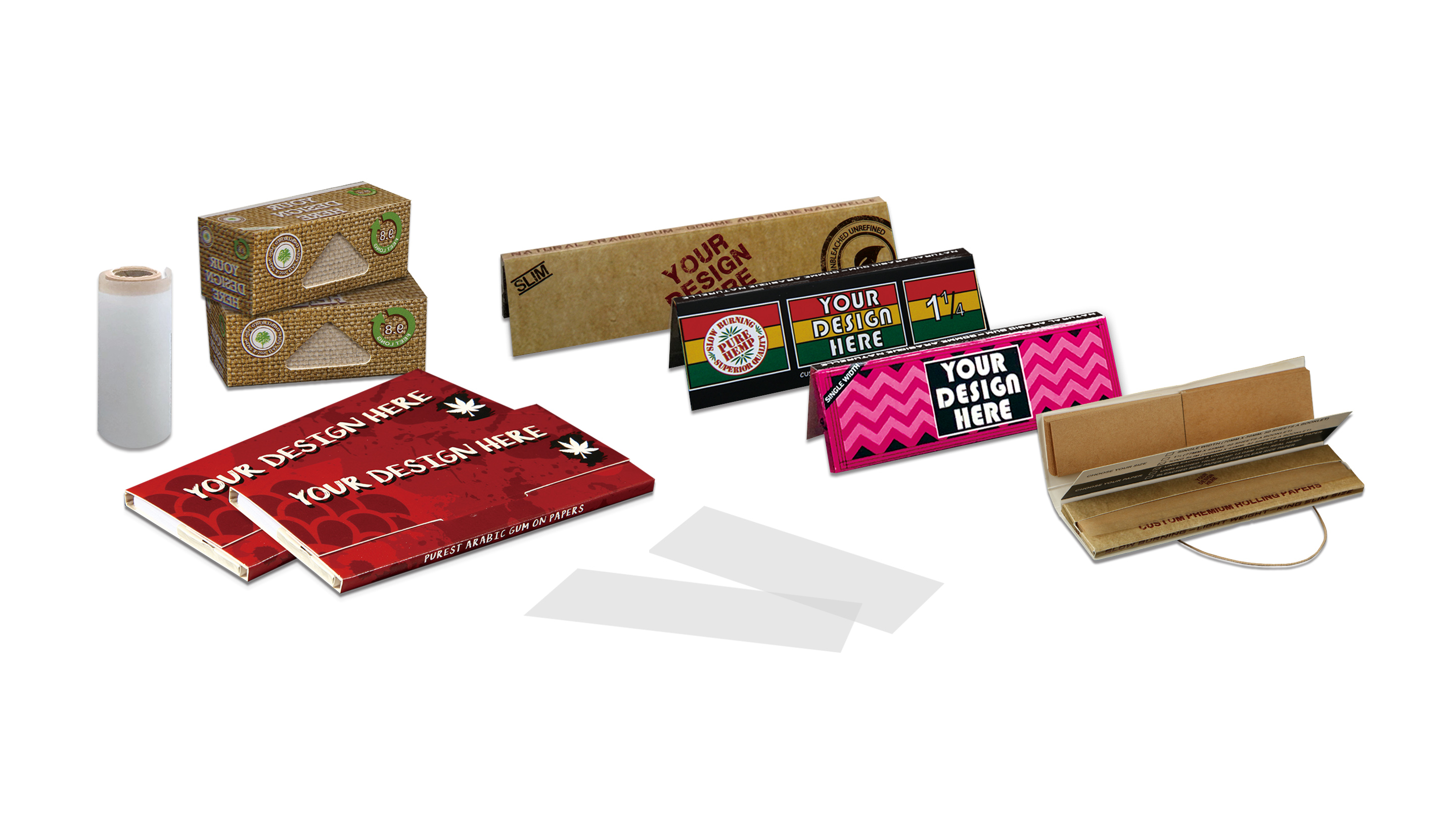

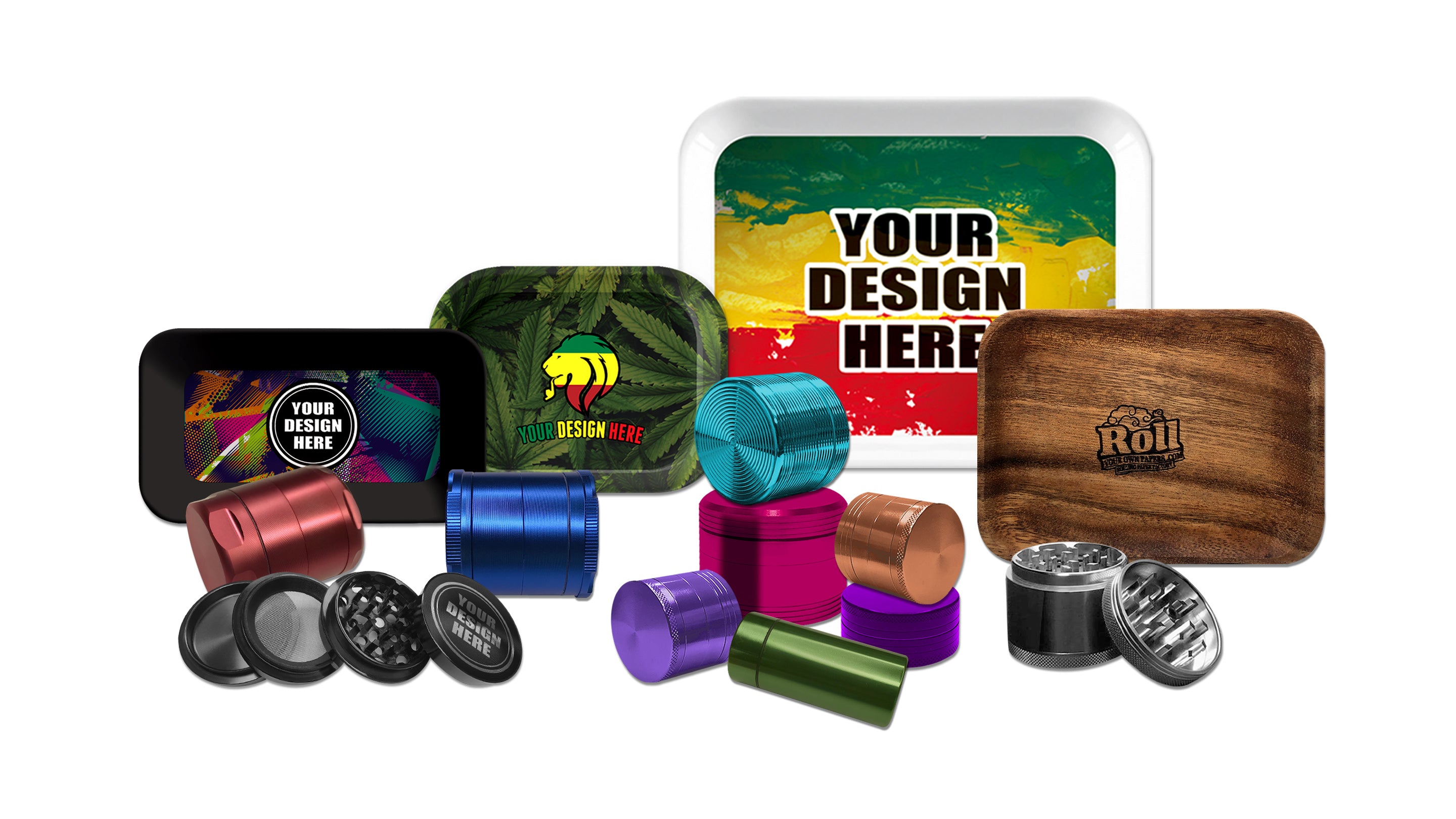
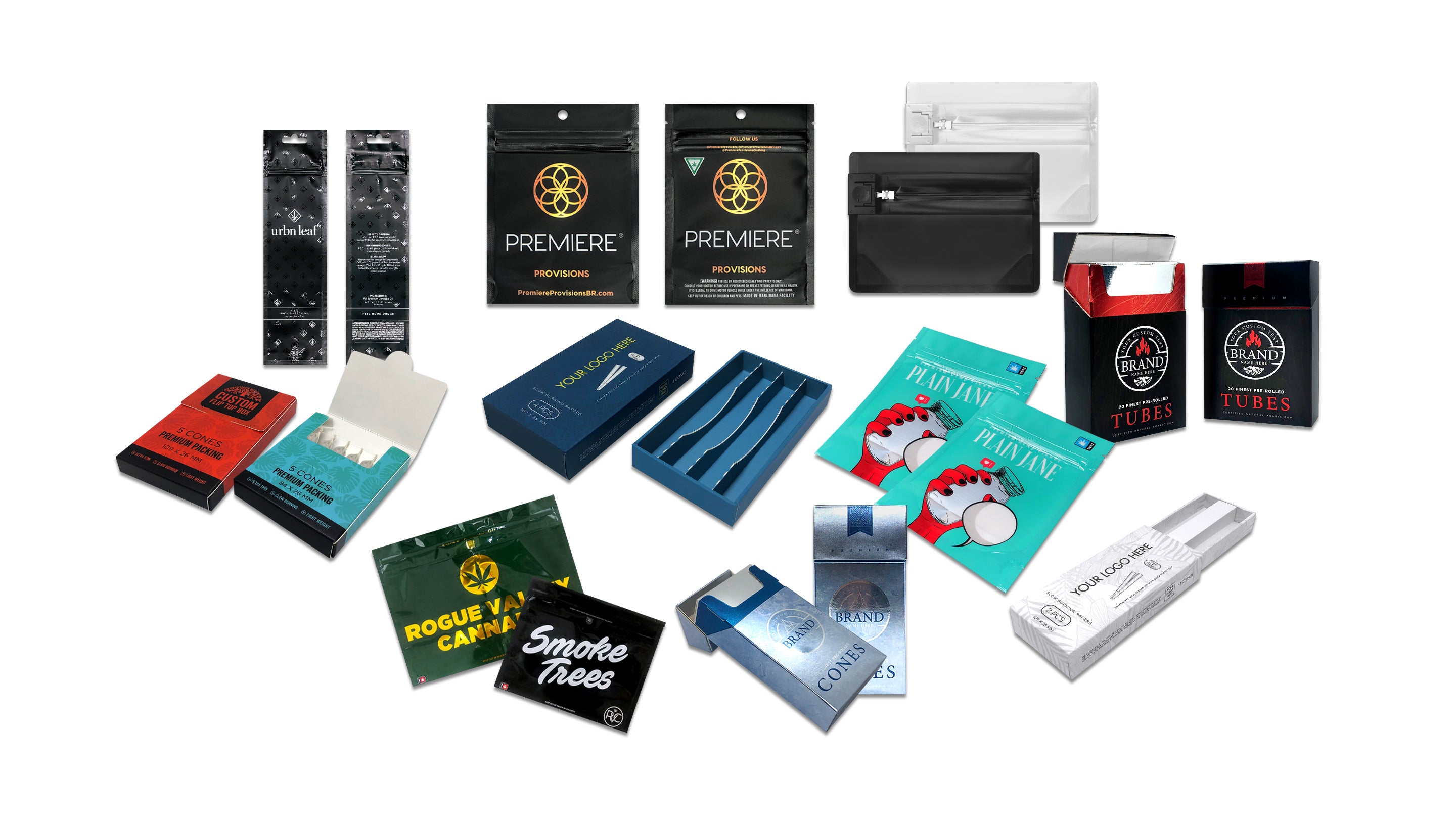

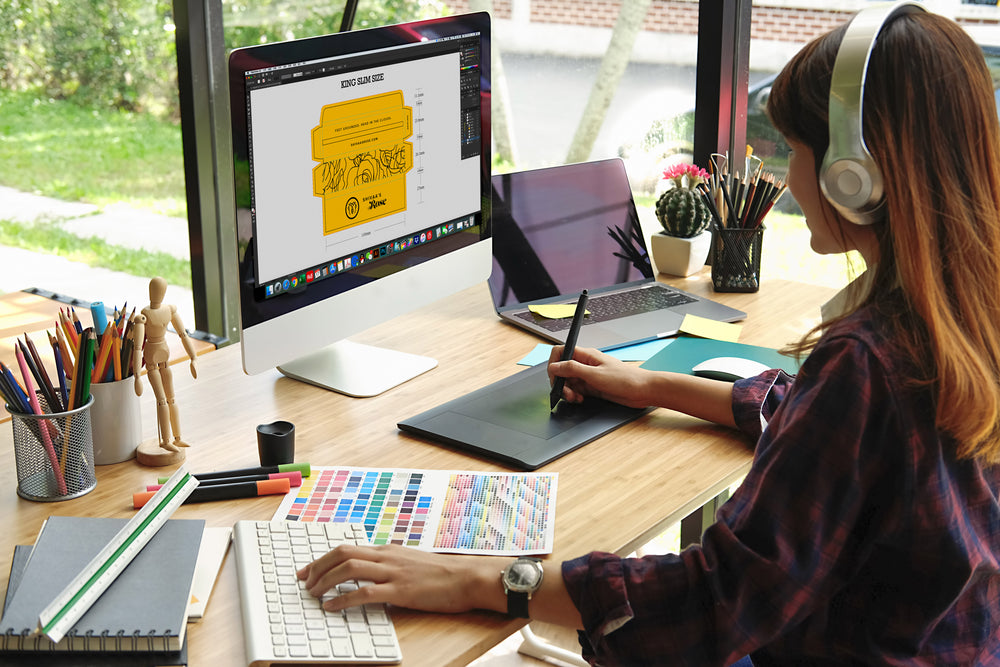



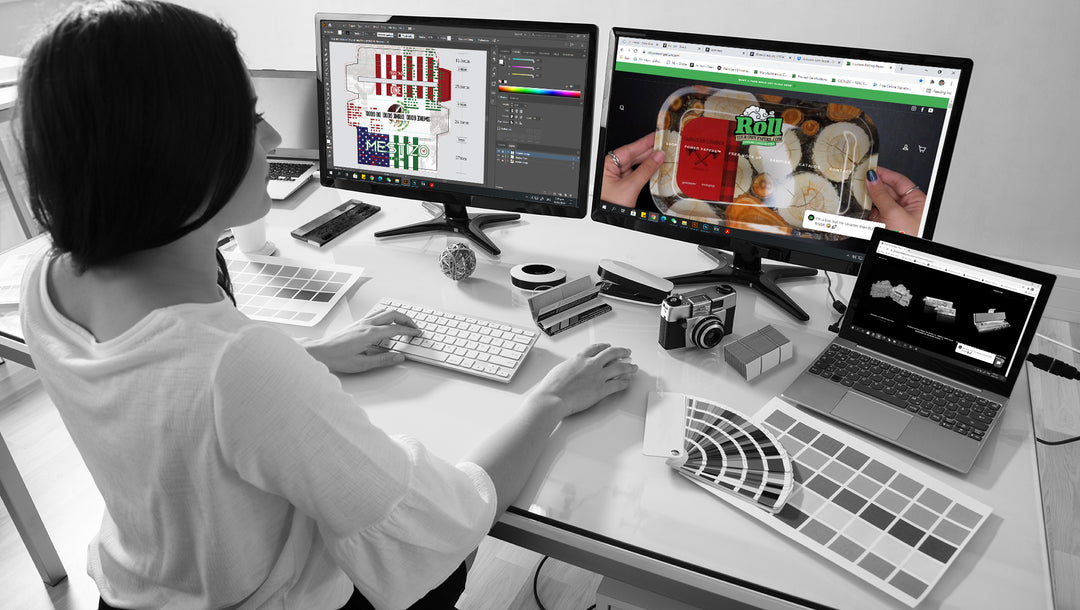


Leave a comment